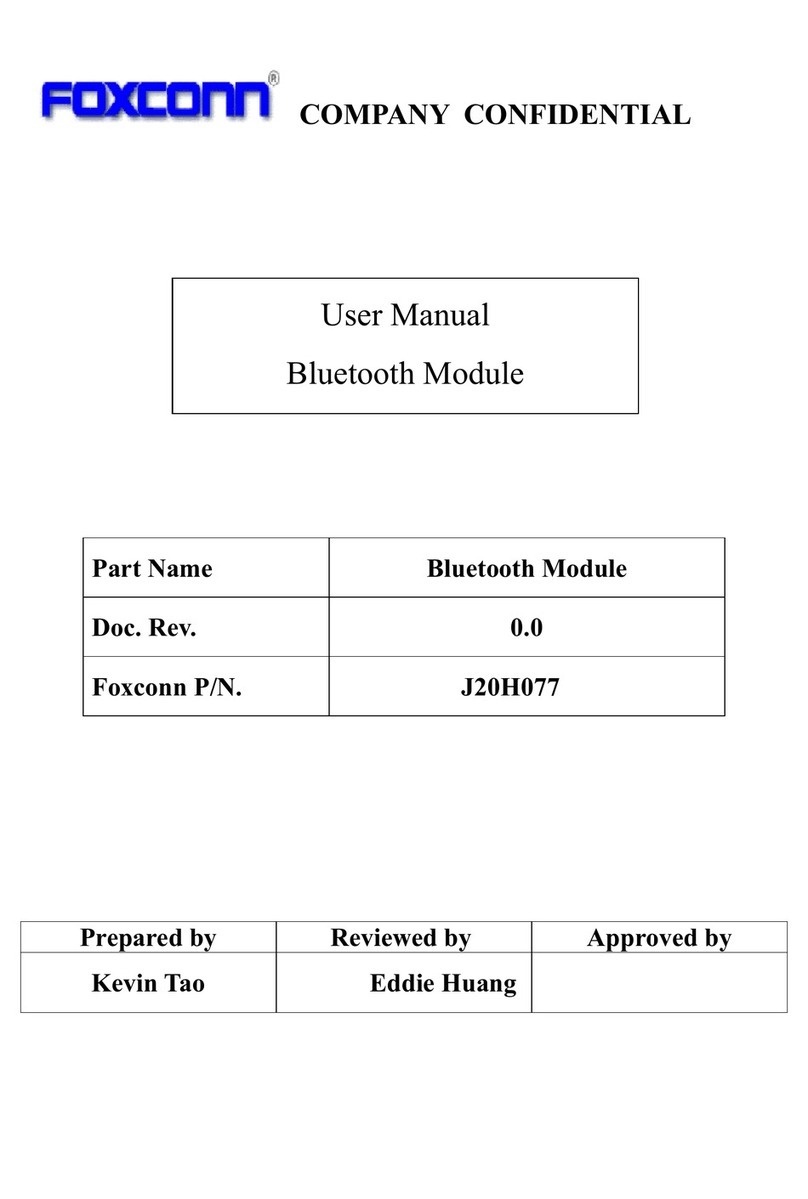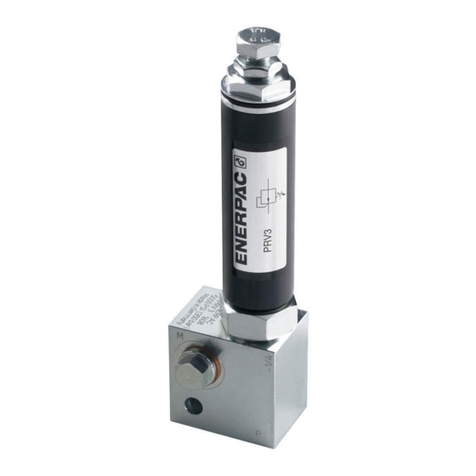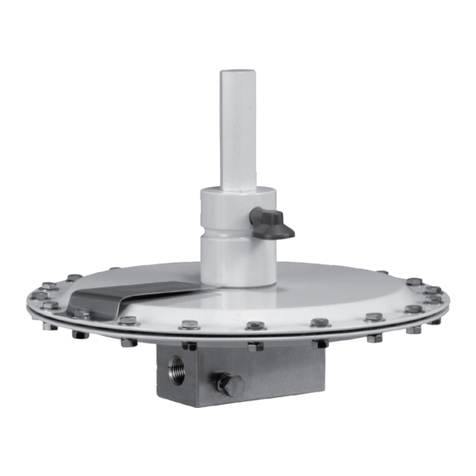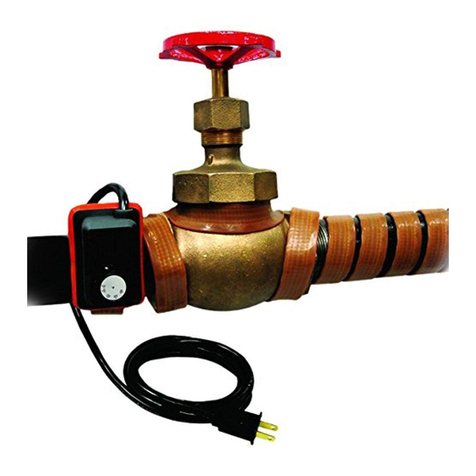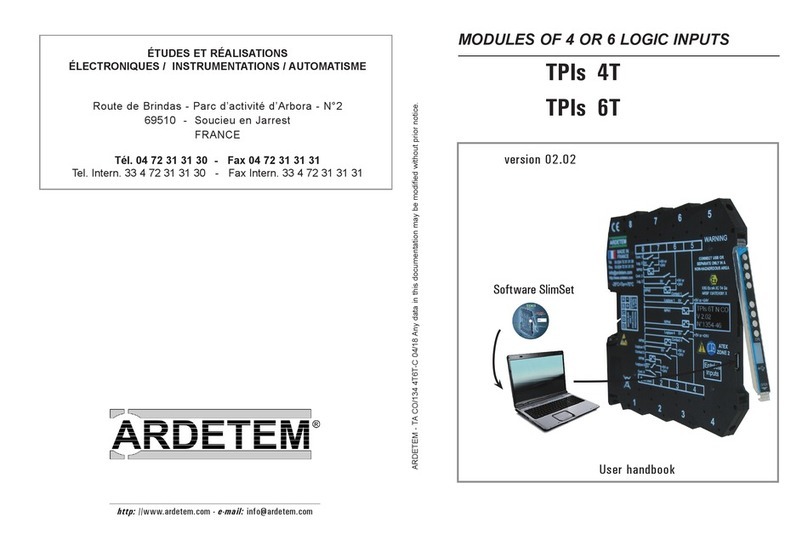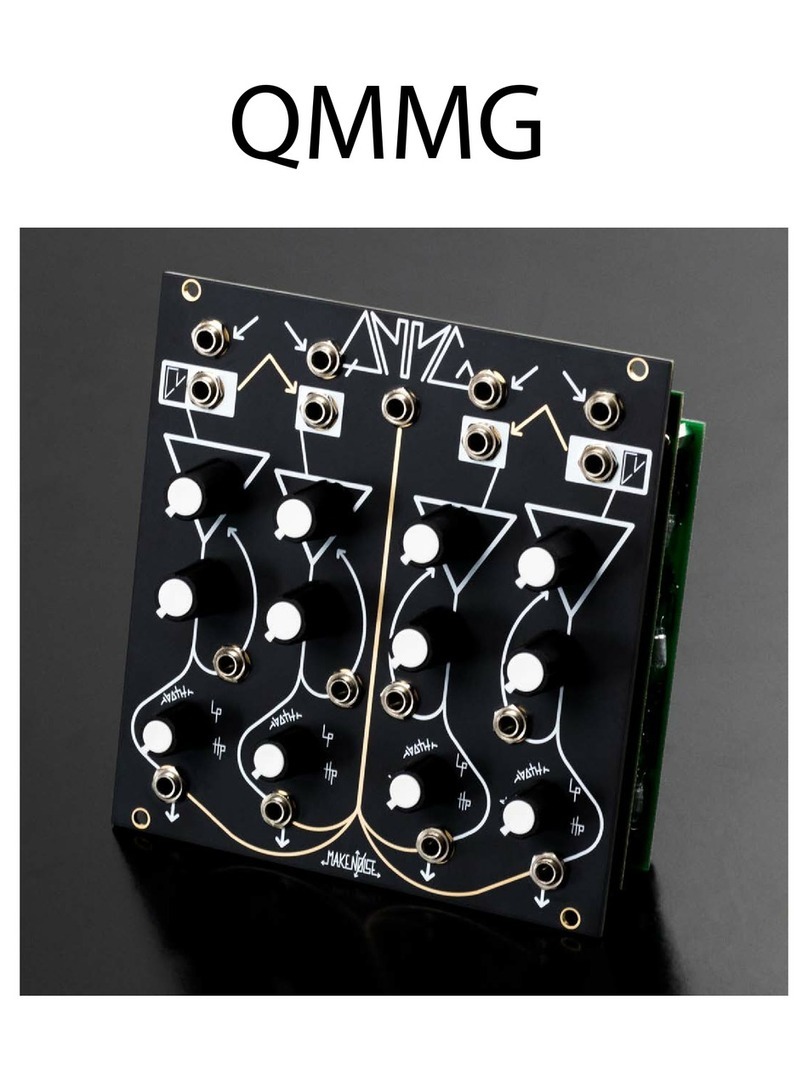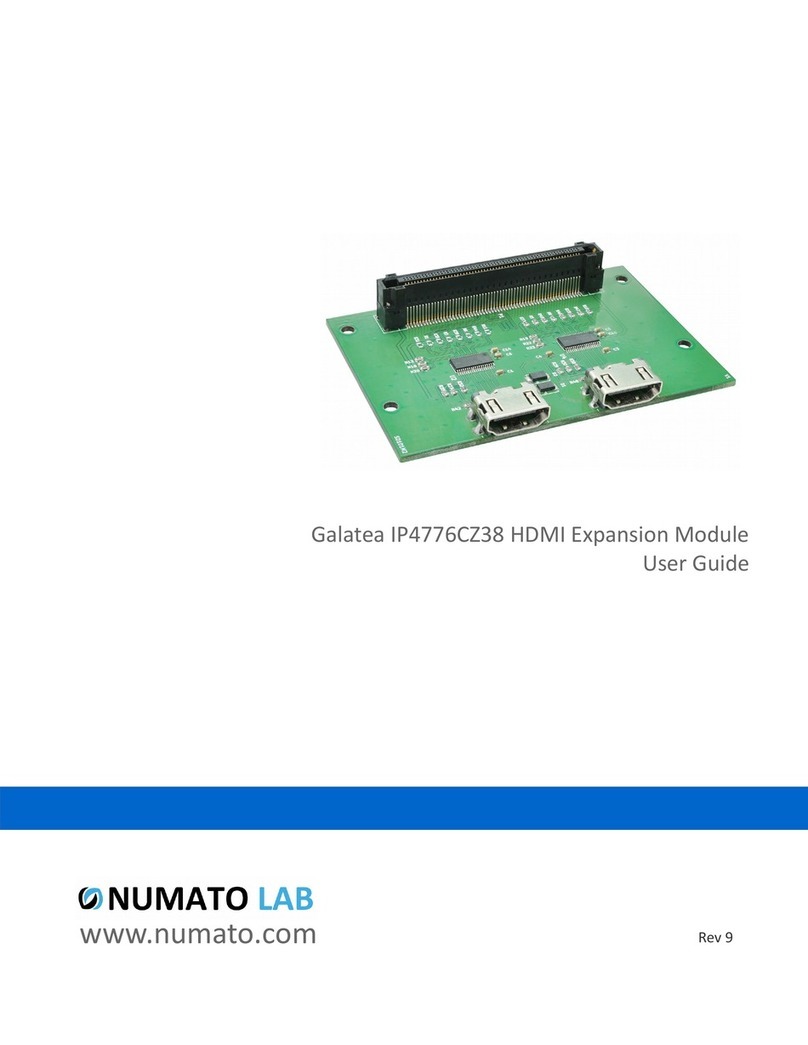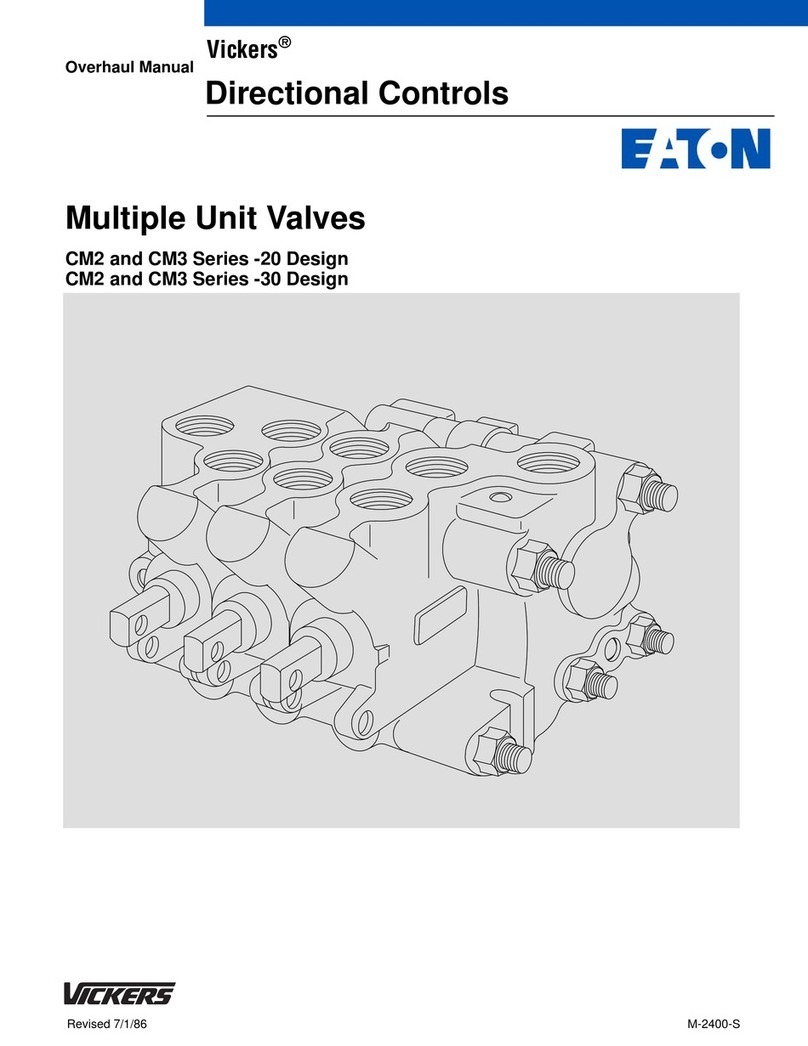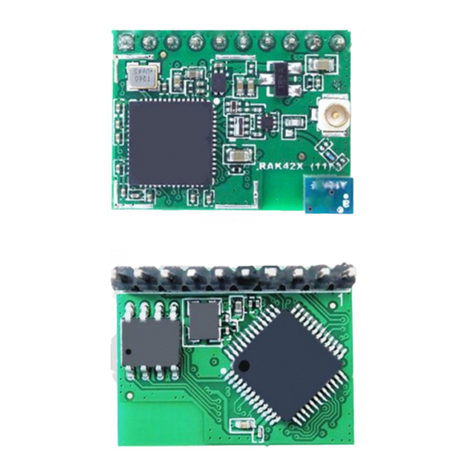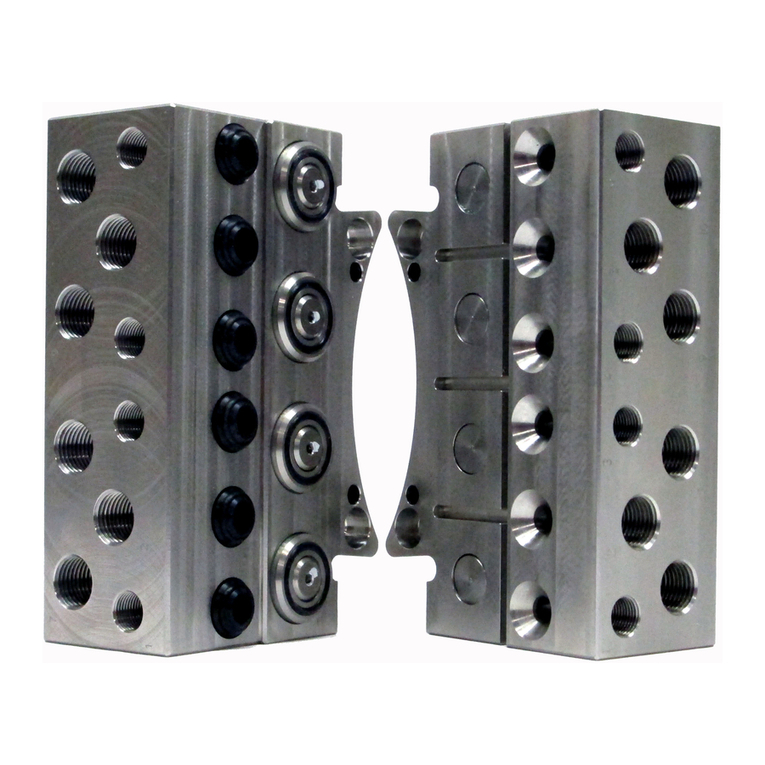TTC PCM30U Operation instructions

PCM30U-OCH
Power Channel Modules
TTC TELEKOMUNIKACE, s.r.o.
Třebohostická 5, 100 00 Praha 10
Czech republic
Tel.: +420 234 052 111
Fax: +420 234 052 991
Email:[email protected]
Web: http://www.ttc.cz
Document no. 446S037.914.14N00
© 2005
This document may be changed or altered without
notice.

PCM30U, PCM30U-OCH – User's, Operating and Maintenance Manual
Power Channel Modules E-1 446S037.914.14N00
Contents
ESPECIAL 234 MM MODULES FOR PROTECTIONS ........................................E-3
E.1 PBS, 4PBS....................................................................................................... E-3
E.1.1 Module description...................................................................................... E-3
E.1.2 Submodules................................................................................................ E-4
E.1.3 Elementary scheme .................................................................................... E-5
E.1.4 Combination and time features................................................................... E-6
E.1.4.1 Standard function ..............................................................................................................E-6
E.1.4.2 Input filtering ...................................................................................................................... E-6
E.1.4.3 Prolongation ...................................................................................................................... E-7
E.1.4.4 And function....................................................................................................................... E-8
E.1.4.5 Or function ......................................................................................................................... E-8
E.1.4.6 And / Or combination......................................................................................................... E-8
E.1.4.7 Output limiting.................................................................................................................... E-9
E.1.4.8 Acknowledgment function.................................................................................................. E-9
E.1.4.9 PBS to 2x 4PBS ................................................................................................................E-9
E.1.5 Security (in general).................................................................................. E-10
E.1.5.1 Continual test...................................................................................................................E-10
E.1.5.2 Button Test ......................................................................................................................E-10
E.1.5.3 Button test sequence....................................................................................................... E-10
E.1.5.4 Security............................................................................................................................E-11
E.1.5.5 Dependability...................................................................................................................E-12
E.1.6 Schematics ............................................................................................... E-13
E.1.6.1 Inputs and outputs .......................................................................................................... E-13
E.1.6.2 Error outputs ERR1, ERR2..............................................................................................E-14
E.1.6.3 Schematic of internal source –24 V/30 mA .....................................................................E-14
E.1.7 PBS Technical Parameters....................................................................... E-15
E.1.7.1 General parameters......................................................................................................... E-15
E.1.7.2 Inputs (units with serial number F03 and higher) ............................................................E-16
E.1.7.3 Inputs (units with serial number F01, F02) ......................................................................E-17
E.1.7.4 Outputs ............................................................................................................................E-18
E.1.8 Front panel ............................................................................................... E-19
E.1.9 LED indication........................................................................................... E-21
E.1.10 PBS jumpers and mechanical configuration ............................................. E-23
E.1.10.1 Setting the functioning of ERR1 alarm opto-relay ........................................................... E-23
E.1.10.2 Setting the functioning of ERR2 alarm elektromechanical relay .....................................E-23
E.1.10.3 Setting command nominal input voltage .........................................................................E-23
E.1.10.4 Configuration switches .................................................................................................... E-23
E.1.11 PBS layout................................................................................................ E-24
E.1.12 XC201 Connector pin description ............................................................. E-25
E.1.13 Recommended wires and tools for connector XC201............................... E-26
E.1.14 Trouble shooting ....................................................................................... E-27
E.1.15 Tolerance mask and example of measured hysterezis for 2nd input ......... E-28
E.2 RO4................................................................................................................ E-29
E.2.1 Description of the function of the RO4 unit ............................................... E-29
E.2.1.1 RO4’s transmitting direction (into transmission path)...................................................... E-29
E.2.1.2 RO4’s receiving direction................................................................................................. E-30
E.2.2 Technical parameters ............................................................................... E-32
E.2.3 Block diagram ........................................................................................... E-33

PCM30U, PCM30U-OCH – User's, Operating and Maintenance Manual
E.2.4 Setting points of the RO4 unit................................................................... E-34
E.2.5 Configuration jumpers............................................................................... E-35
E.2.5.1 Mode of the unit...............................................................................................................E-35
E.2.5.2 Channel feedback control................................................................................................E-35
E.2.5.3 Input resistance ...............................................................................................................E-35
E.2.5.4 Maximum input voltage.................................................................................................... E-35
E.2.5.5 Maximum output voltage .................................................................................................E-35
E.2.5.6 Digital delay .....................................................................................................................E-35
E.2.5.7 Analogue delay / phase lead ...........................................................................................E-36
E.2.5.8 Analogue delay................................................................................................................ E-36
E.2.5.9 Analogue phase lead....................................................................................................... E-36
E.2.5.10 Error signalling.................................................................................................................E-36
E.2.5.11 Doubled amplifier 50 Hz ..................................................................................................E-36
E.2.5.12 *) Doubled amplifier 50 Hz............................................................................................... E-37
E.2.5.13 **) Setting the feedback control channel (at setting B – Synch. gen) ............................. E-37
E.2.6 Connector of the RO4 unit ........................................................................ E-38
E.2.7 RO4 - LED ................................................................................................ E-39
E.2.8 Front panel settins .................................................................................... E-40
E.2.9 Alarm signalling ........................................................................................ E-41
E.2.9.1 Error fast summation (channels 1+2) ERR optic relay .................................................... E-41
E.2.9.2 Error electromechanical relays for channels 1 and 2, ERR1 (ERR2) .............................E-41
E.3 The ROR Module........................................................................................... E-42
E.4 Notes.............................................................................................................. E-43
List of Diagrams and Figures
ESPECIAL 234 MM MODULES FOR PROTECTIONS ........................................E-3
Fig 1 Block diagram of the PBS module ................................................................. E-5
Fig 2 Schematic of inputs and outputs.................................................................. E-13
Fig 3 Setting points of the PBS module ................................................................ E-24
Fig 4 Block diagram of the RO4 unit (one channel) ............................................. E-33
Fig 5 Setting points of the RO4 unit...................................................................... E-34
Fig 6 Fault signalling by summation optic relay on the RO4 unit .......................... E-41
Fig 7 Schematic of ERR1, ERR2.......................................................................... E-41
Power Channel Modules E-2 446S037.914.14N00

PCM30U, PCM30U-OCH – User's, Operating and Maintenance Manual
E Special 234 mm Modules for Protections
E.1 PBS, 4PBS
E.1.1 Module description
Number of commands: 10 + 1 acknowledge input, 4PBS variant has only 4 commands.
The unit can be equipped with a display to count received and transmitted commands
The unit has integrated central part, real time and battery backed-up storage of command and
alarm log
Improved combined outputs for higher load and speed
A sub-unit for line interface
The unit is supplied in two variants
A channel unit to be put into PCM30U-OCH, 6OCH and 6OCH8 subrack
A self-standing unit as PCM30U-OCH, PWA subrack – must be equipped with interface
submodule.
PBS unit is designed to transmit commands or binary states via PCM30U-OCH equipment. Two units
located at opposite stations ensure highly secure bidirectional transmission of 10 commands / binary states.
Each of 10 inputs with galvanic decoupling has two terminals for the connection of external contacts. A
battery with grounded plus or minus pole can be used to supply bias voltage.
In order to improve interference resistance, inputs 1 - 4 are equipped with circuits guaranteeing low input
impedance up to the threshold voltage; inputs 5 - 10 have constant input impedance.
For each input, the value of external DC voltage can be adjusted individually by jumpers (24 V, 48 V,
110 V or 220 V). Voltage filtering is done by input threshold adjusted to 60 – 75 % of the nominal voltage
level.
There is an internal 24VDC power source included in the unit with the output on minus pole to enable
connection of external unbiased contacts. The current is limited to 40 mA. The external contacts are to be
interconnected with internal source through external cabling.
Each of 10 outputs with galvanic decoupling has two terminals to enable connection of external devices
(e.g. relay windings) with a battery (positive or negative pole grounded) to supply bias voltage.
Outputs 1 - 4 are combined (electronic-mechanical), outputs 5 - 10 are purely electronic.
At the combined outputs, an electronic switch guarantees the speed of switching, while a mechanical
relay makes it possible to have permanent high DC current load even at maximum switched voltage.
Delayed switch-off of the electronic switch prevents arc discharge when the mechanical contacts drop-put.
As a standard, the combined outputs are equipped with switch-on contacts, switch-off contacts can be
supplied on demand (closed when power is off). Maximum load is 4 A/250 V DC.
The advantage of electronic outputs is their speed of switching. Their lifetime period is practically
independent from the number of their working cycles. (They can be used also for slow data transmission at
rates up to 200 Bd.) As a standard, the outputs are equipped with switch-on contacts, switch-off contacts can
be supplied on demand (closed when power is off). Maximum load is 1A /250 V DC.
The functions of logical sum (one of the two inputs must be excited) or logical product (both inputs
excited) can be applied to the command inputs, with the resulting signal being then transferred to both
outputs at the same time. This feature is not accessible with 4PBS variant.
In addition to the command inputs, there is another input (called QUIT) in the unit serving for
acknowledge button. This function can be assigned to a selected output or selected outputs by means of
SW. The selected outputs can then be SW-set to permanent on-state after a command is received. The
attendant must cancel the on-state manually by pushing the acknowledge button.
At each input, time filtering can be set from zero up to 64 ms and prolonged command duration period
up to 10 000 ms. Maximum time duration of the on-state can be limited (by 1 000 ms).
When a failure condition is ascertained in any part of the transmission path, this leads to the command
outputs being blocked in pre-failure states, or optionally to the return to idle state or else to the transmission
of a command with the duration of 150 ms. The failure is shown by the management system and indicated
on the unit itself by means of mechanical and electronic relays. There is always an option to set either
switch-on or switch-off contact by means of a jumper (on when feeding voltage is off).
Power Channel Modules E-3 446S037.914.14N00

PCM30U, PCM30U-OCH – User's, Operating and Maintenance Manual
The unit involves a real time clock and backed-up memory that makes it possible to record times of
transmitted commands in the PBS unit. DORIS management system records command times in a database
and allows for their filtering.
The unit can be equipped with a display to show the number of received / transmitted commands by
each command input / output, up to 999 commands. The command input / output to be displayed is selected
using buttons on the unit’s front panel.
E.1.2 Submodules
The PBS unit supports the following sub-modules:
a) SB4E1 converting commands to full 2 Mbps E1 stream
b) OS1 converting commands to full 2/8 Mbps stream through optical cable (1310nm)
c) OS2 converting commands to full 2/8 Mbps stream through optical cable (1550nm)
d) SU64 converting commands to 64 kbps stream with codirectional interface
e) SUMO converting commands to slow RS232 channel to be transmitted via modem.
The PWA subrack accommodates one PBS unit. PCM30U-OCH in the 6OCH4 rack can accommodate
up to four PBS units, transmitting 10 to 40 commands and binary states from each network point. If 6OCH8
rack is used, up to eight units can be installed allowing for the transmission of up to 80 commands.
Configuration of PBS in PWA differs from configuration in 6OCHx, 3OCHx subracks, because in PBS in
PWA incorporates some functions of central module. The differences are mentioned in chapter describing
individual features.
Power Channel Modules E-4 446S037.914.14N00

PCM30U, PCM30U-OCH – User's, Operating and Maintenance Manual
E.1.3 Elementary scheme
Front panel
Reset
LM
M
LED
in / out
submodule
Test
PW,ER,TST
SK
Fig 1 Block diagram of the PBS module
Heart of the unit is PLD Xilinx, which makes all security, time filtering, prolonging, shortening. Microcomputer
is responsible for configuration, communication with management system, log of commands and alarms.
Configuration is stored in two seeprom, can be loaded also from seeprom located at backplane in 6OCH8,
6OCH4. Unit checks 5 V, 3 V and –Ubk used for feeding relays. Switches are used for basic configuration.
INPUT 1-4
INPUT 5-10
QUIT
PW connecte
r
XC202
OUTPUT 1-4
OUTPUT 5-10
ERR1
ERR2
-Ub / -24 V
unit to backplane connecte
r
XC8
-Ub
internal data
3.3V / 5V
converter
5V
soft
start
5 V
3 V
KJ position
ext. sync.
V.11
Submodule
interface
PLD
Xilinx
V.11
RS232
Microcomputer
FLASH
BSRAM
seeprom1
seeprom2
real time
thermometer
battery
CPLD
RST
WD 5V
WD 3V
LEDS
Buttons
LEDS
LEDS
LM
1
E2
2
VCO
67 MHz
MROM-cfg
cf
g
I
2
C bus
cfg from
backplane
A
ddress / Data
buss
Power Channel Modules E-5 446S037.914.14N00

PCM30U, PCM30U-OCH – User's, Operating and Maintenance Manual
E.1.4 Combination and time features
E.1.4.1 Standard function
Input state is transferred to remote unit outputs with minimal transport delay.
Input 1
Output 1
Td
E.1.4.2 Input filtering
Input filtering is minimal presence of command at input required to be transmitted to remote PBS. Shorter
input signals are ignored. Result is transmission delay.
Input 1 10 ms
Transmission
of input 1 to
remote PBS.
Input filtering
0 ms
5 ms
10 ms 5 ms
Transmission
of input 1 to
remote PBS.
Input filtering
8 ms.
8 ms 10 ms
Power Channel Modules E-6 446S037.914.14N00

PCM30U, PCM30U-OCH – User's, Operating and Maintenance Manual
E.1.4.3 Prolongation
This is to ensure minimal duration of transmitting command.
Input 1 100 ms
Transmission
of input 1 to
remote PBS
50 ms
Transmission
of input 1 to
remote PBS
Prolongation
to 80 ms
100 ms
100 ms
50 ms
80 ms
Transmission
of input 1 to
remote PBS
Prolongation
to 150 ms
150 ms 150 ms
Transmission
of input 1 to
remote PBS
Prolongation
to 200 ms
200 ms
200 ms
Power Channel Modules E-7 446S037.914.14N00

PCM30U, PCM30U-OCH – User's, Operating and Maintenance Manual
E.1.4.4 And function
Input 1
Output 1
Input 7
Output 7
E.1.4.5 Or function
Input 1
E.1.4.6 And / Or combination
This option is set and applied only at transmitter side. Only pairs input can be (and / or)ed. Pairs are
build from these combinations: 1-7, 2-8, 3-9, 4-10, 5-6, 7-8, 9-10.
IN 1
IN 2
IN 3
IN 4
IN 5
IN 6
IN 7
IN 8
IN 9
IN 10
PBS 1
A
ND/OR
A
ND/OR
A
ND/OR
A
ND/OR
A
ND/OR
A
ND/OR
A
ND/OR
OUT 1
OUT 2
OUT 3
OUT 4
OUT 5
OUT 6
OUT 7
OUT 8
OUT 9
OUT 10
PBS 2
Output 1
Input 7
Output 7
Power Channel Modules E-8 446S037.914.14N00

PCM30U, PCM30U-OCH – User's, Operating and Maintenance Manual
E.1.4.7 Output limiting
Command 1
as received
from
transmission
path
Output state
of command 1
without
limiting
100 ms 50 ms
100 ms 50 ms
80 ms
Output state
of command 1
with limiting to
80 ms
50 ms
E.1.4.8 Acknowledgment function
E.1.4.9 PBS to 2x 4PBS
Special interconnection of commands designed for transmission from one PBS to two 4PBS. Function is
performed and selected only et PBS. Odd commands are routed to A group, even commands are routed to B
group. This option requires special firmware and is not recommended for direct tripping, because is it results
in complicated network structure.
1
2
3
4
5
6
7
8
9
10
1
2
3
4
1
2
3
4
A
B
PBS 4PBS
4PBS
Input 1
Output 1
Ack
Power Channel Modules E-9 446S037.914.14N00

PCM30U, PCM30U-OCH – User's, Operating and Maintenance Manual
E.1.5 Security (in general)
PBS transmits data in 64bit blocks called packets. Block contains state of commands (doubled for 1-6
command), CRC of 12th order, synchronization and management channel. Management channel and part of
synchronization are not covered by CRC. Synchronization is spread around whole packet I order to improve
resilience against false synchronization.
Additional security shall be obtained by “repeating” requesting 2 or 4 equal states of received commands to
act at outputs.
This result in following “probability of unwanted command” Puc.= 3.2 109*p13, where p equals BERR.
Inputs are periodically (every 500μs @128 kbit/s) sampled and coded into this packet.
E.1.5.1 Continual test
Packets are transmitted and received continually (every 500μs @128 kbit/s), that means both local and
remote PBS are under full check as well as transmission path.
Next more this test uses back acknowledgment bits located in packet. Every received command is
transmitted back to source as an acknowledgment of transmission. This test is performed every 10 ms
E.1.5.2 Button Test
This test is intended to be used at commissioning time or at “troubleshooting procedure”. Purpose is to check
individual LEDs and routing when PBS with “two direction” feature is used.
Test can be initiated only by pressing Test button at unit for time longer then 500 ms. Test cannot be initiated
when command is active. Since it takes some time (approximately 500 ms) to stop the Test, it cannot be
used under full operational mode, because transmission time could not be granted.
E.1.5.3 Button test sequence
Test initiated by button at PBS1. “Start of Test” record is written to alarm log.
PBS1 disconnects inputs and outputs.
PBS1 transmits “Test state” to PBS2
PBS2 blocks outputs, creates “button test loop” and confirms test state
PBS1 simulates step-by-step individuals commands and check that they come back.
LED indicates command being tested, flashing green LED indicates failure at individual command.
“Test state” must be canceled at both PBS to return to operational state.
“End of Test” - “success” or “failure” record is written to alarm database
IN 1
IN 10
OUT 1
OUT 10
coding
security
command
back ack
command
PBS1 PBS2
2 packets/ms
(128 kbit/s)
button
test
loop
permanent
test loop
in / out
discon
nection
Power Channel Modules E-10 446S037.914.14N00

PCM30U, PCM30U-OCH – User's, Operating and Maintenance Manual
E.1.5.4 Security
Figure below represents calculated probability of unwanted (false) command as a function of bit error
rate for different number of repeats.
Power Channel Modules E-11 446S037.914.14N00
1,00E-42
1,00E-39
1,00E-36
1,00E-33
1,00E-30
1,00E-27
1,00E-24
1,00E-21
1,00E-18
1,00E-15
1,00E-12
1,00E-09
1,00E-06
1,00E-03
1,00E+00
1,00E-041,00E-031,00E-021,00E-011,00E+00
BERR
Puc
PBSPuc
PBSPuc2
PBSPuc4

PCM30U, PCM30U-OCH – User's, Operating and Maintenance Manual
E.1.5.5 Dependability
Figure below represents measured dependability as a function of bit error rate for different To according
to recommendation. To=1,2 means, that command is stated as lost, when delayed more then 1,2 of nominal
transmission time.
Dependability
1,00E-05
1,00E-04
1,00E-03
1,00E-02
1,00E-01
1,00E+00
1,00E-051,00E-041,00E-031,00E-02
BER
Pmc
1
1,2
1,5
Power Channel Modules E-12 446S037.914.14N00

PCM30U, PCM30U-OCH – User's, Operating and Maintenance Manual
E.1.6 Schematics
E.1.6.1 Inputs and outputs
Fig 2 Schematic of inputs and outputs
Current limiter with
optorelay
Optocoupler
and
supporting
circuit
RC filter to
remove glitches
Logic level
converter
A
dditional load
switched off when
U in
p
ut > U threshold
Resistor network for
nominal voltage selection
configurable by jumpers
4 kV
and 300 V
protection
+ In
p
ut
- In
p
ut
Input 1 to 4
I to Xilinx
Current limiter with
optorelay
Optocoupler
and
supporting
circuit
RC filter to
remove glitches
Logic level
converter
Resistor network for
nominal voltage selection
configurable by jumpers
4 kV
and 300 V
protection
+ In
p
ut
- In
p
ut
Input 5 to 10
I to Xilinx
Outputs 1 to 4
Switch ON
accelerate
circuit
Optorelay
Logic level
converter
Level
converter
logic / -Ubat
300 V
Protection
-Ubat
+Out
p
ut
-Out
p
ut
Outputs 5 to 10
Switch ON
accelerate
circuit
Optorelay
Logic level
converter 300 V
Protection
+Out
p
ut
-Out
p
ut
Power Channel Modules E-13 446S037.914.14N00

PCM30U, PCM30U-OCH – User's, Operating and Maintenance Manual
E.1.6.2 Error outputs ERR1, ERR2
E.1.6.3 Schematic of internal source –24 V/30 mA
Switch ON
accelerate
circuit Optorelay
Logic level
converter 300 V
Protection
+ ERR1
- ERR1
j
umper
switch XJ800
j
umper
switch XJ801
Electronical error output ERR1
Level
converter
logic / -Ubat 300 V
Protection
-Ubat
+ ERR2
- ERR2
j
umper
switch XJ802
Electromechanical error output ERR2
-24 V regulator
with ove
r
-current
protection (40 mA)
30V
Protection
Internal source –24 V/30 mA
I sense
U sense
GND
-Ubat -24 V / 30 mA
GND
Power Channel Modules E-14 446S037.914.14N00

PCM30U, PCM30U-OCH – User's, Operating and Maintenance Manual
E.1.7 PBS Technical Parameters
E.1.7.1 General parameters
Number of bi-directional commands 10 (4)
Acknowledge input (ACK) 1
Transmission and security time (Tts)
additional security (repeating)transmission
speed 1x (basic) 2x 4x
64 kbps 2 ms 4 ms 8 ms
128 kbps 1 ms 2 ms 4 ms
256 kbps 0,5 ms 1 ms 2 ms
Acting at output time (Ta)
Output Switch on Switch off
1 ÷ 4 1 ms 4 ms
5 ÷ 10 1 ms 1 ms
Complete transmission time is summation of Tts + Ta +Ttp. Ttp is additional delay caused by transmission
path.
HW unit configuration
Unit identification – A direction 4 bit address by switches on the unit
Unit identification – B direction 4 bit address by switches on the unit
nominal input voltage individual jumpers for each command
on / off switch error outputs individual jumpers for each
on / off switch command outputs switch off only on demand while order (assembly option)
SW unit configuration
Input command digital filtering 0÷48 ms ±1 ms
Prolonging of command at input 0÷10 000 ms ±10 ms (0 - 1200 ms)
±100 ms (1200 – 10 000 ms)
Shortening of command at output 0÷1 000 ms ±1 ms (0 - 120 ms)
±10 ms (120 – 1000 ms)
Add, and, blocking at input
Blocking and kvit at output
Only one function of kvit and blocking can be used,
because of they use commonn input KVIT.
Capacity of unit‘s command log 1000 records
Capacity of the DORIS command log Depending on the hard disk free space
DORIS
Counter of transmitted commands
Optionally display (0-999)
DORISCounter of received commands
Optionally display (0-999)
Operation
Error
Test
Command sending (10x LED)
Status indications by LED on panel
Command receiving (10x LED)
Urgent, non-urgent, service alarmLine interface status (only PWA)
Unspecific error – must be identified by DORIS
DIN 41612 type E Crimp contacts
CFVA 48, type E, 48 pin with grub screws for 10 commands
Command interface
connector
DIN E 32, type E, 32 pin with grub screws for 4 and 6 commands
Power Channel Modules E-15 446S037.914.14N00

PCM30U, PCM30U-OCH – User's, Operating and Maintenance Manual
E.1.7.2 Inputs (units with serial number F03 and higher)
And units F01, F02 marked with blue round mark described 03
Inputs 10+1, optocouplers with galvanic decoupling
Electrical resilience of optocouplers > 4 kV DC / 3,75 kV AC RMS
Electrical resistance against ground, between different
inputs and outputs
> 100 MΩ/ 500 V DC
Overvoltage strength against surge 10/700 μs
ITU-T K.20
4 kV
Nominal DC voltage (Un) (selectable by jumpers) 24 V, 48 V, 110 V, 220 V
Command „active“ input voltage tolerance 0,85 ÷ 1,2 Un
Command „non-active“ input voltage tolerance 0 ÷ 0,2 Un
03
Threshold voltage Uth
Nominal voltage Inputs 1-4 Inputs 5-10, ACK input
Voltage increasing 0,6 ÷ 0,65 Un 0,6 ÷ 0,65 UnUn = 220 V DC
Voltage declining 0,44 ÷ 0,5 Un 0,59 ÷ 0,64 Un
Voltage increasing 0,6 ÷ 0,65 Un 0,6 ÷ 0,65 UnUn = 110 V DC
Voltage declining 0,45 ÷ 0,51 Un 0,59 ÷ 0,64 Un
Voltage increasing 0,6 ÷ 0,65 Un 0,6 ÷ 0,65 UnUn = 48 V DC
Voltage declining 0,46 ÷ 0,52 Un 0,59 ÷ 0,64 Un
Voltage increasing 0,6 ÷ 0,65 Un 0,6 ÷ 0,65 UnUn = 24 V DC
Voltage declining 0,48 ÷ 0,54 Un 0,59 ÷ 0,64 Un
Input hysteresis
Inputs 1-4 Inputs 5-10, ACK input(For all nominal voltages)
0,08 ÷ 0,22 Un 0,005 ÷ 0,03 Un
Threshold level can be customized on demand.
Input current at nominal voltage (Ui=Un)
Selected nominal voltage Inputs 1-4 Inputs 5-10, ACK input
Un = 220 V DC 2,9 mA ±20% 2,6 mA ±20%
Un = 110 V DC 2,9 mA ±20% 2,6 mA ±20%
Un = 48 V DC 2,9 mA ±20% 2,6 mA ±20%
Un = 24 V DC 2,9 mA ±20% 2,6 mA ±20%
Input current before threshold (Ui = 0,995 ÷ 0,999 Uth )
Note increased noise immunity of inputs 1-4
Selected nominal voltage Inputs 1-4 Inputs 5-10, ACK input
Un = 220 V DC 11,8 mA ±20% 1,6 mA ±20%
Un = 110 V DC 6,4 mA ±20% 1,6 mA ±20%
Un = 48 V DC 3,4 mA ±20% 1,6 mA ±20%
Un = 24 V DC 2,3 mA ±20% 1,6 mA ±20%
Input current is electonically limmited at higher voltages and can be customized on demand.
Power Channel Modules E-16 446S037.914.14N00

PCM30U, PCM30U-OCH – User's, Operating and Maintenance Manual
E.1.7.3 Inputs (units with serial number F01, F02)
Inputs 10+1, optocouplers with galvanic decoupling
Electrical resilience of optocouplers > 4 kV DC / 3,75 kV AC RMS
Electrical resistance against ground, between
different inputs and outputs
> 100 MΩ/ 500 V DC
Overvoltage strength against surge 10/700 μs
ITU-T K.20
4 kV
Nominal DC voltage (Un) (selectable by jumpers) 24 V, 48 V, 110 V, 220 V
Command „active“ input voltage tolerance 0,85 ÷ 1,2 Un
Command „non-active“ input voltage tolerance 0 ÷ 0,2 Un
Inputs 1-4 Inputs 5-10, ACK input
Voltage increasing 0,6 ÷ 0,75 Un 0,6 ÷ 0,75 UnThreshold voltage Uth
Voltage declining 0,45 ÷ 0,6 Un 0,58 ÷ 0,73 Un
Hysteresis 0,08 ÷ 0,22 Un 0,008 ÷ 0,02 Un
Threshold level can be customized on demand.
Input current at nominal voltage (Ui=Un)
Selected nominal voltage Un Inputs 1-4 Inputs 5-10, ACK input
220 VDC 3,0 mA ±20% 2,5 mA ±20%
110 VDC 3,0 mA ±20% 2,5 mA ±20%
48 VDC 3,0 mA ±20% 2,5 mA ±20%
24 VDC 3,0 mA ±20% 2,5 mA ±20%
Input current before threshold (Ui = 0,995 ÷ 0,999 Uth )
Note increased noise immunity of inputs 1-4
Selected nominal voltage Un Inputs 1-4 Inputs 5-10, ACK input
220 VDC 12,5 mA ±20% 1,7 mA ±20%
110 VDC 6,9 mA ±20% 1,7 mA ±20%
48 VDC 3,7 mA ±20% 1,7 mA ±20%
24 VDC 2,4 mA ±20% 1,7 mA ±20%
Input current is electonically limmited at higher voltages and can be customized on demand.
Power Channel Modules E-17 446S037.914.14N00

PCM30U, PCM30U-OCH – User's, Operating and Maintenance Manual
E.1.7.4 Outputs
voltage drop at max. load
Outputs
typical value max. value
1-4 electronic-mechanic switch 100 mV 200 mV
5-10 electronic switch 1 V 1,4 V
Electrical resistance against ground and between
different outputs and inputs
> 100 MΩ/ 500 V DC
Overvoltage resilience against surge 10/700 μs
ITU-T K.20
1 kV
Electrical resilience of command contacts
Relay contacts / ground > 4 kV DC / 3,75 kV AC RMS
Open relay contacts 280 V DC Limited by electronic switch protection
Maximum contact load Switched
voltage V DC
Permanent
condition A DC
Closed/open
contact
current A DC
L/R=40 ms
Open/closed
contact current
A DC, 0,2 s
L/R=10 ms
Outputs 1-4 5 ÷ 280 V 4 A 4 A 30 A
Outputs 5-10 5 ÷ 280 V 1 A 1 A 1,5 A
Electronic alarm relay 5 ÷ 280 V 1 A 1 A 1,2 A
24 V 4 A 1,2 A
48 V 1,5 A 0,5 A
60 V 1 A 0,4 A
110 V 0,6 A 0,22 A
220 V 0,4 A 0,1 A
Electromechanical alarm relay
280 V 0,3 A 0,06 A
4 A
Failure relays
electromechanical switch ERR2 Optionally on/off switch
electronic switch ERR1 Optionally on/off switch
Electrical resilience of alarm relays
Relay contacts / ground > 4 kV DC
Relay contacts open 280 V DC Limited by protection
Output switches lifetime Switches w/o load Switches at maximum load
Outputs 1-4 >1x107 >1x107
Outputs 5-10 > 1x1012 > 1x1012
Electronic alarm relay > 1x1012 > 1x1012
Electro-mechanical alarm relay > 1.5x107 > 5x105
Internal source for contacts -24 VDC / 30 mA against ground
Power Channel Modules E-18 446S037.914.14N00

PCM30U, PCM30U-OCH – User's, Operating and Maintenance Manual
E.1.8 Front panel
E.1.8.1 PWA variant.1.8.1 PWA variant
PBS
Test button
Long pushing the button
starts automatic
transmission test of
commands 1÷10
Reset button
Pres and release to
reset PBS
M interface connector
(management channel)
for control equipment
RB ant M
interconnection
LM – Local
Management channel
interface
Interface K1 of
submodule (PWA option)
Interface K2 of
submodule (PWA option)
Display (optional)
Power Channel Modules E-19 446S037.914.14N00
This manual suits for next models
1
Table of contents

